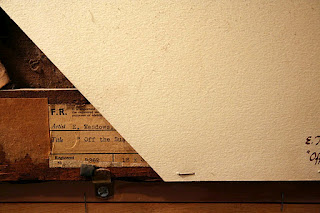In a sign of the times, one of the most frequent queries that we get these days goes something like this: “I was given (inherited, won) a print or painting, sculpture by “John Smith” (or, I don’t know who the artist is but it looks really old) and am curious about what it is worth because I’d like to sell it. Can you help me?”
Before we can answer that question, there is some key information that we need in order to determine if we can help you or, if you have something that is worth an appraiser’s standard fee of upwards of $150 an hour.
Is it original?
By original we mean, is it a unique oil/acrylic/watercolor/drawing or sculpture that is signed by an artist? If you are not sure and if it is in a frame, examine it out of the frame.
Who is the artist?
Look for a signature on the front or the back of the painting, or, if it is a sculpture, on the base. Another reason to take a print or painting out of the frame is that there may be a gallery label on the back identifying the artist, title, date and even price.
What are the dimensions?
Height and width of a two-dimensional work, height, width and depth if a three-dimensional work.
What is the history of ownership?
Where did you or the person from whom you received the artwork acquire the piece? If you don’t know, look for any old appraisals, invoices or certificates.
What is the condition?
The condition of the artwork usually has a significant impact on value. Look for rips, holes, insect infestation, fading, toning, water damage etc… Again, this is another reason to remove an artwork from the frame. Oftentimes artwork that has been in the family for decades has never been reframed, consequently the piece has become degraded due to over-exposure to light, or from non-archival acidic backings.
Do a quick google search with the artist’s name to see if he or she pops up. Or go to one of the fine art databases to see if your artist has enough of a market to be included.
Finally, it is important to understand that the value of an artwork varies according to the purpose of the appraisal. The value assigned to a work for insurance purposes is Replacement Value, typically what you would pay at a gallery. The value assigned to an artwork for donation, estate tax or sales purposes, is known as Fair Market Value, defined by professional appraisal organizations as what a willing buyer and a willing seller would agree is a reasonable price in the open marketplace, usually the auction market.



